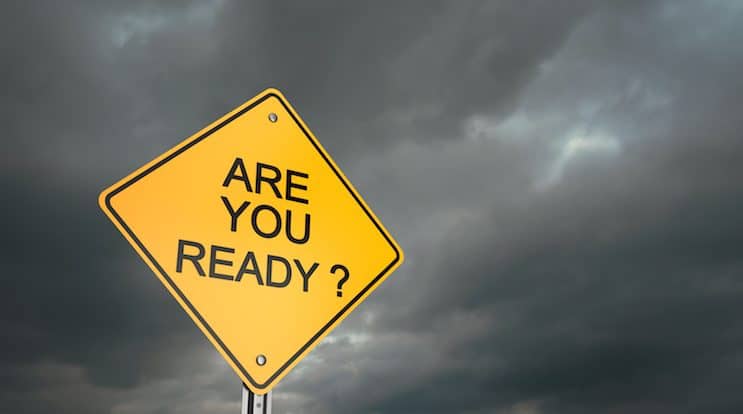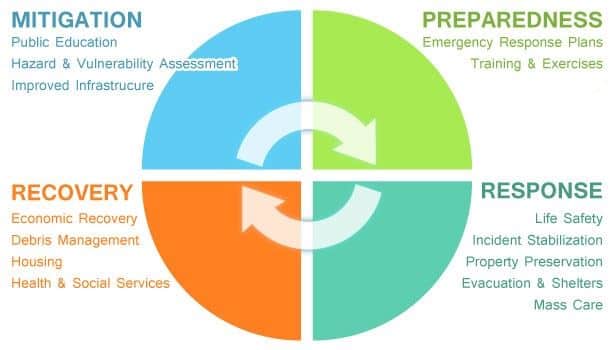What Is a Family Plan For Emergency Preparedness?
A family plan for emergency preparedness outlines what you and your family members will do to survive and stay safe in an emergency. Specifically, the plan should include details on communication, shelter, and evacuation. The plan, once written, should be practiced and reviewed often.How Do You Prepare A Family Emergency Preparedness Plan?
To prepare a family emergency plan, first, consider which types of disasters are most likely to strike in your area. Ready.gov lists the following disasters as ones to consider. Choose a few initially from the list below that you feel are most likely to happen in your area or your home, and begin your plan there:- Active Shooter
- Attacks in Public Places
- Avalanche
- Bioterrorism
- Chemical Emergencies
- Cybersecurity
- Drought
- Earthquake
- Explosion
- Extreme Heat
- Floods
- Hazardous Materials Incidents
- Home Fires
- Household Chemical Emergencies
- Hurricanes
- Landslides and Debris Flow
- Nuclear Explosion
- Nuclear Power Plants
- Pandemic
- Power Outages
- Radiological Dispersion Device
- Severe Weather
- Snowstorms and Extreme Cold
- Space Weather
- Thunderstorms and Lightning
- Tornadoes
- Tsunamis
- Volcanoes
- Wildfires
What Are The Four Phases Of Emergency Preparedness?
The four phases of emergency preparedness planning include questioning, personalizing, writing, and practicing. Step one of emergency preparedness planning consists of discussing with your family, friends, or household members four major questions:- How will I receive emergency alerts and warnings?
- What is my shelter plan?
- What is my evacuation plan?
- What is my household’s communication plan?
Why Do You Need To Have A Plan In Place In Case Of An Emergency?
A pre-outlined plan in an emergency is absolutely critical. This plan is essential because so many resources could be cut off in an emergency. We need to know beforehand how we will communicate, where we will meet, what we will do, and how we will react before it is too late. Even more than this, in the moment of panic, it will be nearly impossible to act with reason if you have not thought through situations beforehand. As we work through with our families our own personalized plan, we can become empowered to respond in ways that are safe, smart, and aligned with our values. And for all those who are parents: we will not always have direct access to our kids in an emergency. Perhaps they will be in a different room during an earthquake, or there will be an active shooter at their school, or they will get lost while camping with friends. The best thing that we can do as parents in a world where we cannot control risk for our kids is to prepare them. We can do this through writing plans with them, keeping open communication, and practicing, practicing, practicing. Although it can be terrifying to consider our kids being in danger, communicating and preparing them is critical.Who Should Be Involved In Making The Plan?
Those within our household, or those whom we are responsible for, should be included in making our emergency preparedness plan. Involve your kids at all ages, tailoring the discussions to their level of understanding.Why Is It Important To Practice An Emergency Plan With Your Family?
The “practice” part of the plan, although often overlooked, is just as important as all of the other parts. Preparedness is only as good as your practicing. For example, you can read 100 books on how to start an effective fire. But the moment that you are lost in the wilderness, the book knowledge is hardly as important as the actual practice of building the fire. The same is true with any emergency. Practicing for each part of an emergency with your family or household members will help you be able to actually execute the necessary steps towards survival and safety in the emergency situation.Related posts:
How Can I Talk to Kids About Emergency Preparedness?
How Can Individuals With Disabilities Prepare For Emergencies?
How To Clean Used 55 Gallon Barrels For Water Storage
Is All Emergency Food Storage The Same Thing in Different Packaging?
How Can I Develop a Family Emergency Plan?
Besides a Pandemic, What Else Should I Prepare For?
A Real-Life Example Of Why Emergency Preparedness Is So Important
What Documents Should I Have On Hand In Case Of An Emergency?



